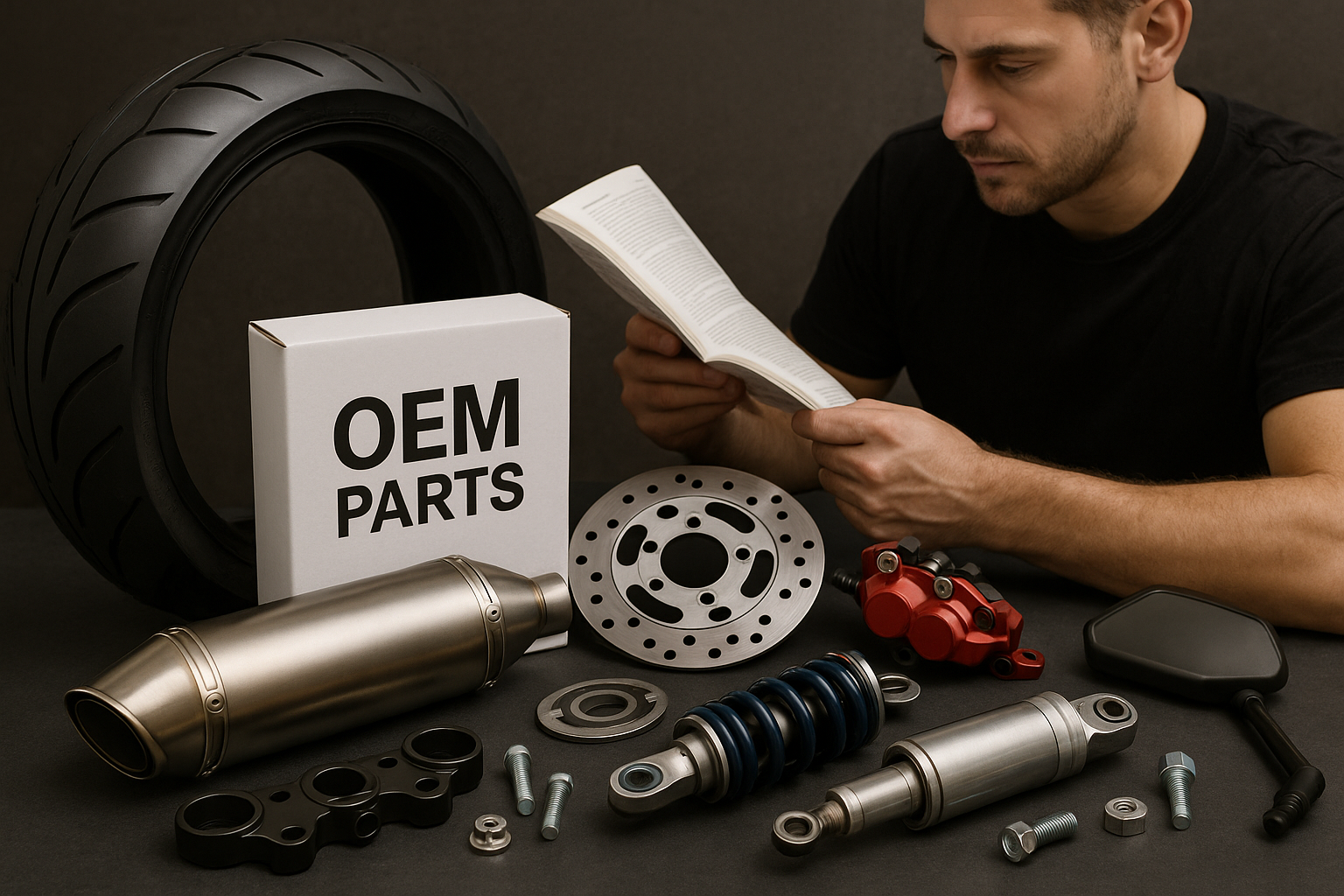Choosing the Right Motorcycle Parts for Performance and Reliability
Understanding OEM and Aftermarket Parts
Understanding the difference between OEM (Original Equipment Manufacturer) and aftermarket parts is essential when maintaining or upgrading a motorcycle. The original manufacturer makes OEM parts and ensures compatibility and consistent performance, while aftermarket parts offer more variety, often at lower prices, but may vary in quality and fit.
Choosing the right components depends on your performance goals, budget, and riding habits. Some riders prefer the reliability of OEM, while others seek customization through aftermarket options. Regardless of preference, selecting high-quality motorcycle parts is key to ensuring safety, performance, and long-term durability. Always check product specifications carefully before making a purchase. Consulting a trusted mechanic can also help you make an informed decision that aligns with your motorcycle’s needs.
Evaluating Quality and Materials
The durability, safety, and performance of your motorcycle depend on the quality of its materials. Premium parts are made from aircraft-grade aluminum, titanium, and stainless steel, each chosen for specific benefits. Aluminum offers strength and lightness, suitable for stress-bearing parts. Stainless steel resists corrosion, ideal for exhausts and brakes. Titanium, though more costly, combines high strength with minimal weight, perfect for performance and durability. Knowing these materials helps ensure a wise investment in longevity and safety.
Compatibility and Fitment
Compatibility and fitment should be top priorities when choosing the right motorcycle parts for performance and reliability. Using parts that match your bike’s specifications ensures proper function and helps prevent potential damage and safety issues down the line. Even high-quality components can underperform if not suited to your make and model. Whether upgrading your ride or handling routine maintenance, checking for accurate fitment is essential. In many cases, professional guidance through motorcycle repair can help confirm that each part works seamlessly within the system. A well-matched part contributes to better performance, smoother rides, and long-term dependability. Over time, this attention to detail can also reduce the need for frequent replacements and unexpected repairs.
Performance Upgrades
For many riders, the appeal of upgrading their motorcycle lies in increased power and a holistic improvement of the riding experience. Thoughtful performance upgrades address comfort, control, and consistency. Among the most beneficial enhancements are:
- Exhaust Systems: Upgrading your exhaust boosts horsepower, reduces weight, and creates a sharper, aggressive sound that is appealing to enthusiasts.
- Suspension Components: High-quality, tunable suspension systems from top brands improve stability, handling, and road feedback, making spirited rides and daily commutes more comfortable and confident.
- Brake Systems: High-performance brakes with friction pads, ventilated rotors, and multi-piston calipers reduce stopping distances and resist fade during heavy use, crucial for advanced riders or rugged terrains.
However, it’s essential to ensure your chosen upgrades work harmoniously. Boosting your motorcycle’s speed or handling without upgrading corresponding safety systems, like brakes or chassis supports, can create imbalance and risk. A well-chosen set of performance upgrades makes your ride faster, safer, and more enjoyable as a complete package.
Safety Considerations
Rider safety is paramount in modifications and repairs. Poorly made or counterfeit parts, like brake pads and fasteners, pose hidden hazards that can lead to failures. Always choose parts that meet safety standards and have extensive testing. Reputable manufacturers ensure quality through thorough testing, which reduces the risk of malfunctions and helps maintain the bike’s safety.
Cost-Effectiveness
While premium motorcycle parts may cost more initially, they offer long-term value. High-quality parts lower failure rates, last longer, and prevent costly repairs. They also improve daily riding by increasing comfort, responsiveness, and reliability. The higher upfront cost is often justified for riders wanting peace of mind and a longer motorcycle lifespan.





